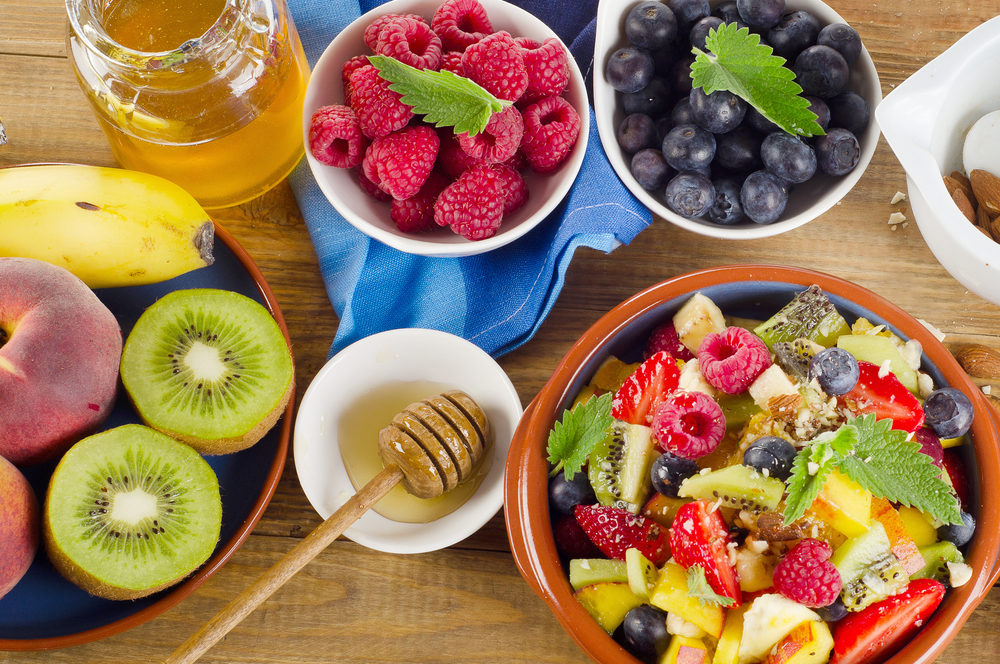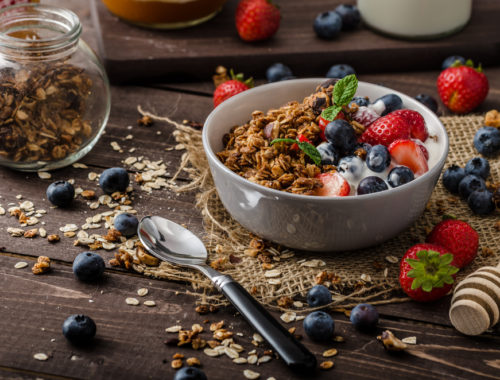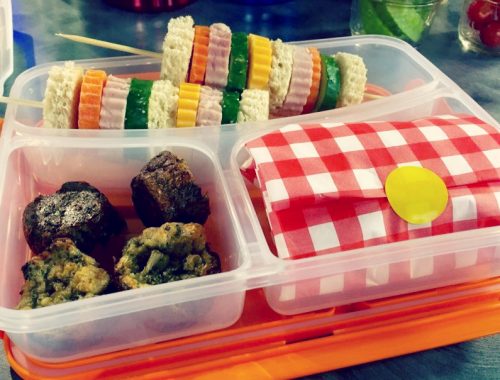Have you ever been in a grocery store and realized you are completely and utterly in a food rut? Or perhaps you realize this in the fast food lineup! Spring is a great time to start some new habits for health. Even if you can pick a couple of the ones below, it could make a huge difference in your energy levels, sleep quality and outlook.
Break for breaky
Breakfast is the most important meal of the day. Fill your tank with healthy whole foods in the morning so you have fuel for the day. Some simple and healthy breakfast ideas are: fresh fruit, home made oatmeal (not the flavoured packaged kind). it’s a good idea to avoid prepared refined breakfast foods like frozen waffles, biscuits and croissants which offer a quick burst of energy from refined sugars that will not sustain you throughout your morning, in addition, they are chalk full of poor quality fat and almost void of any nutrients.
Chew, chew, chew!
Mom always said so, and we are going to have to back her up on this one! Digestion starts in the mouth, with the release of the enzyme amylase which starts the breakdown of starch. also, the more you chew your food the more surface area is exposed for digestive fluids to do their works, leading to more efficient digestion and thus less stomach upsets, bloating and gas, oh my!
Smaller meals more often
Eating smaller meals throughout the day gives your digestive system a better shot at getting the job done right, as well it helps to keep your blood sugar levels even so you don’t crash throughout the day. We’ve heard people say that it also helps them to not over eat at main meal times, – sounds good to me!
Hold the beverage
It sounds a bit counter intuitive, but when eating a meal it is best to avoid drinking liquids which dilute your digestive fluids and enzymes, leading to slower digestion and more work for our system. It is ideal to consume your drinks 1/2 hour before eating or 2 hours after. If you feel like you need a beverage with your meal, room temperature water with lemon is a great choice. Be sure to avoid ice or cold, sugary, and carbonated drinks that can shock the system, bringing digestion to a halt.
The 80/20 rule
Nobody’s perfect all the time and trying to eat healthy at the time can be extremely difficult to stick to. This is why the 80/20 rule can be helpful. The way this rule works is that for the majority of your diet (80%) you choose to eat healthy whole foods while the remaining (20%) you can choose to be more lenient so you can enjoy that piece of cake you’re liable to get offered. If this ratio seems a bit optimistic, try changing the percentage to whatever is most realistic for you in the beginning, and gradually work your way up.
_________________________________________
Related:
Immune System support for Children
Eat, After Your Heart’s Content
__________________________________________
Indulge
When you choose to have a dessert or a rich meal, stop and enjoy every flavour, feel great about your reward – you’ve earned it!
Rest and digest
This philosophy also works well: take time to sit down and relax before eating. Your digestive system will thank-you for it. When you are on the run, your digestion is impaired. Therefore, stop to enjoy the nutritious yummy food you are offering your body.
Shop smart
Try doing most of your shopping around the perimeter of the store, which is where all the fresh foods are. The inner isles contain the more processed and refined foods.
Variety is the spice of life
Variety in your diet is important for many reasons. Variety ensures that you are getting a wide assortment of nutrients. Rotating foods helps to avoid developing food sensitivities to a particular food and of course, variety keeps you palette interested.
Gain a grain
Gain a new grain once a month! There are so many amazing delicious and healthful grains out there, you’ll never know which ones you like until you try them. Most of us tend to eat the same grains but in different forms. The most common grains being consumed are: wheat, corn and rice. Throughout your day, read packages and labels of the foods you are eating – you may be surprised at how often derivatives from these grains appear. Be sure to check our menu for alternative grains!




[…] Healthy eating – 10 tips for eating well Consuming Fish During Pregnancy Can I Use Nail Polish While I am Pregnant? […]